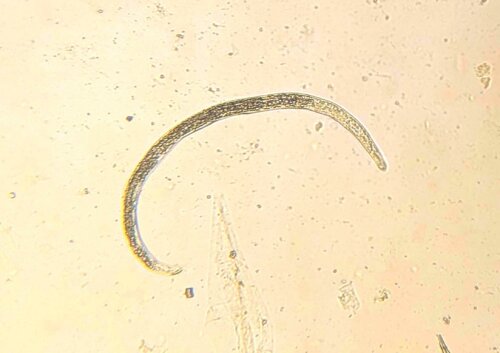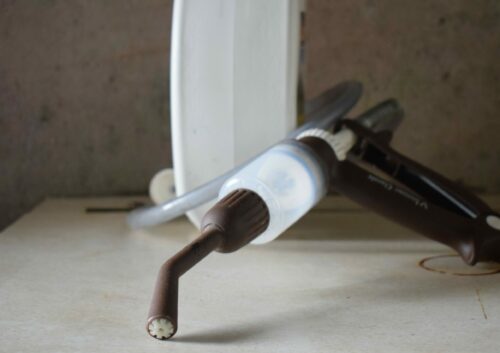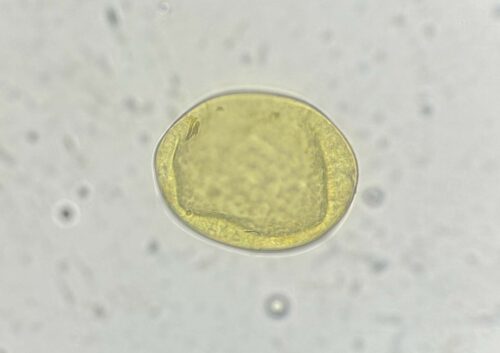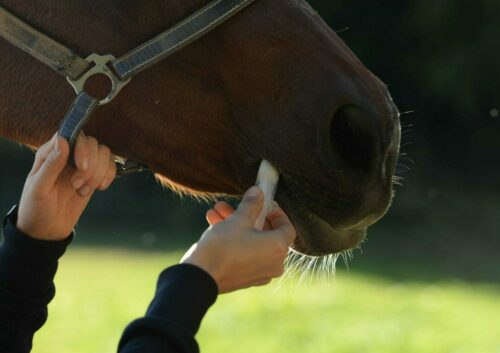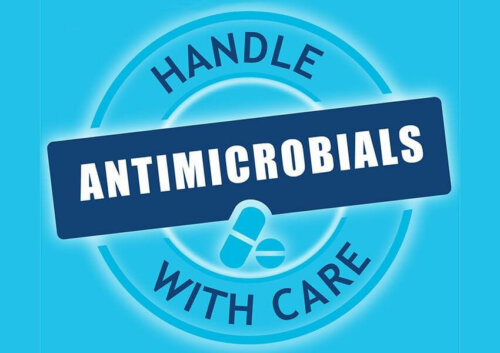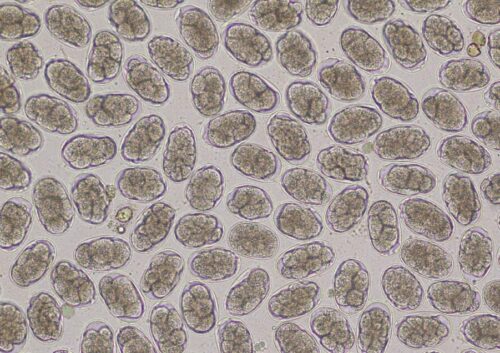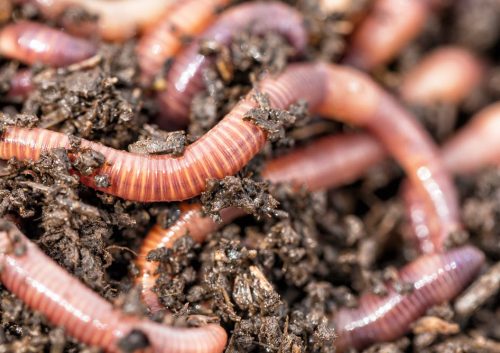One of the key components when performing any test procedure in the laboratory environment is to follow a standardised method. With faecal egg testing, counts can be generated following a huge variety of techniques in terms of sample preparation steps and the means used to count the eggs themselves.
One of the most popular methods is the McMaster test (MAFF 1986), originally described in 1939 and now utilised worldwide. Whilst the steps involved have since been modified to optimise the results. The principle ultimately involves obtaining a raw count of eggs or oocyst from a filtrate prepared with a suitable flotation solution. Once an egg count has been made, the burden level for the sample can be calculated using a multiplication factor based on the dimensions of the viewing slide, the amount of faeces tested, and the dilution factor to give a count in eggs per gram.
This multiplication factor, whilst often referred to as the ’sensitivity’ of the test method, is, in fact, a theoretical number used to transform the raw data. This can be misleading when the term is used to evaluate the performance of a test. It is better to think of this number as the detection limit of the test as opposed to the actual sensitivity (Nielsen 2021).
POISSON DISTRIBUTION
When considering the variability seen with faecal egg count results, it is also important to recognise the probability theory known as the ‘Poisson distribution’. As explained in (Torgerson 2012), “Poisson distribution is a discrete probability distribution that expresses the probability of a given number of events occurring in a fixed interval of time, space or volume if these events occur with a known average rate and independently of the time, space or volume since the last event.”
When parasitic elements are well distributed within a faecal suspension, the eggs and oocyst will be disbursed according to a Poisson pattern. When the filtrate is then added to a counting chamber (as in procedures such as the McMaster) to obtain a raw count, the results will show inevitable variance even when repeating multiple counts from duplicates of the same sample. Any attempt to recover uniform egg counts from the same sample is therefore an exercise in futility. It is also important to note that only the original raw count will reflect the Poisson distribution. As total egg per gram values have been inflated using the previously defined multiplication factor, this will further exaggerate the variance seen in results.
STANDARDISATION OF TESTING PROTOCOL
Standardising any test protocol is very important, as this will reduce the incidence of human error during the preparation phase and ensure the reliability of results across practices. As the Micron kit portability allows for individual practice teams to run their own tests in-house, this is particularly important, as centralised labs will often have a small number of technicians preparing and processing all samples received. Following the protocol closely ensures all practices using the Micron kit are approaching testing in the same way.
Once a sample has been processed through the Micron kit, a video recording is generated and uploaded via the cloud storage system for processing by our machine learning algorithm. As such, all tests have a traceable digital record which is also analysed by a team member as part of the quality control process, ensuring the results end-users receive are as accurate as possible.
GETTING THE MOST FROM YOUR TEST
At Micron Agritech, part of the validation work we do involves testing each variable included in the kit and used to process tests. Through extensive study of individual and duplicate samples, we have tested our kit components in several ways to optimise our procedure for the recovery of parasitic elements within filtrate.
Given that a low level of variance in egg counts is to be expected when considering the points above, it is essential that human error during the sample processing stage is kept to a minimum. To help our users achieve this, we always recommend carrying out each step as described in the kit preparation video and instruction booklet as closely as possible to achieve filtrate prepared in a standardised manner.
There are a few areas we have identified which may help users to get the most from their tests.
- Faeces should always be homogenised as thoroughly as possible before beginning the testing procedure to ensure the eggs are evenly distributed.
- When adding the faeces to the 42ml of water within the sample container, the bottom of the meniscus should always be read when observing from direct eye level rather than above or below.
- When performing the centrifugation step using our manual device, this should always be carried out for 60 pulls, or at least two minutes in total. If an electrical centrifuge is used, the 10ml of filtrate should be spun for five minutes at 1,500 RPM.
- The saturated sodium chloride solution used should have a specific gravity reading of 1.20, which should be checked manually before testing if the user has made a fresh batch according to our simple method. Alternatively, please contact us for a replacement pre-made solution.
- Before filtrate is added to the slide for testing, the container should be inverted before the contents are drawn into the syringe. Due to the flotation solution, any parasite eggs/ova present may have already begun to rise to the surface of the filtrate, and so this minimises the chance of missing important parasites. The filtrate should also not be left standing for long periods before testing.
- Once the slide has been filled, it should be left for two minutes before processing to allow the eggs to float at the desired level for the microscope to detect them.
By adopting these simple approaches, we hope users can get the most from their testing with the lowest possible variation in results. Please contact us if you would like to organise an in-house training session with our team to optimise your preparation method.
CONFIDENCE IN RESULTS – VETQAS TESTING
At Micron Agritech, we are committed to providing reliable test results that users can be confident in. To ensure our test method adheres to high standards, we participate in the VETQAS testing scheme on a regular basis.
VetQAS is a proficiency-testing service conducted independently by the APHA (Sutton Bonington, Loughborough) Quality Assurance Unit. Facilities across the UK and Ireland can voluntarily take part in this scheme which is recognised by national accreditation bodies (ISO/IEC 1704) and is considered a market leader in the testing of veterinary laboratories.
Testing for the detection and quantification of gastrointestinal parasites within faecal samples is completed under the APHA’s PT0114 scheme, conducted three times a year by all facilities registered to take part. Faecal samples with undisclosed contents are sent to participating facilities to be processed via their usual test method to generate results which must be submitted by the provided deadline.
Results are entered into the APHA computerised system to generate a report indicating how close each testing facility was to the target mean value. A visual representation is provided for how close the result was to the mean score compared with the other participating members (anonymised), and proficiency is calculated based on how many standard deviations the value is from the mean.
As illustrated in the figures below, a large variance can be seen for counts across different laboratories for the same faecal samples, which may reflect the difference in the testing methods chosen. Despite an often-wide variance, a laboratory may still be considered proficient in testing, although the target is to obtain a value as close to the APHA mean score as possible. The ‘Z’ score statistically describes how close a result is to the consensus value within a population of results and can be used to identify any outliers.
The results below detail the proficiency scores for Micron Kit from the December VETQAS testing. Each bar represents the result a lab submitted. Note you need to be within two standard deviations of the mean for results to be considered satisfactory. Our goal is to remain as consistently close to the mean as possible.
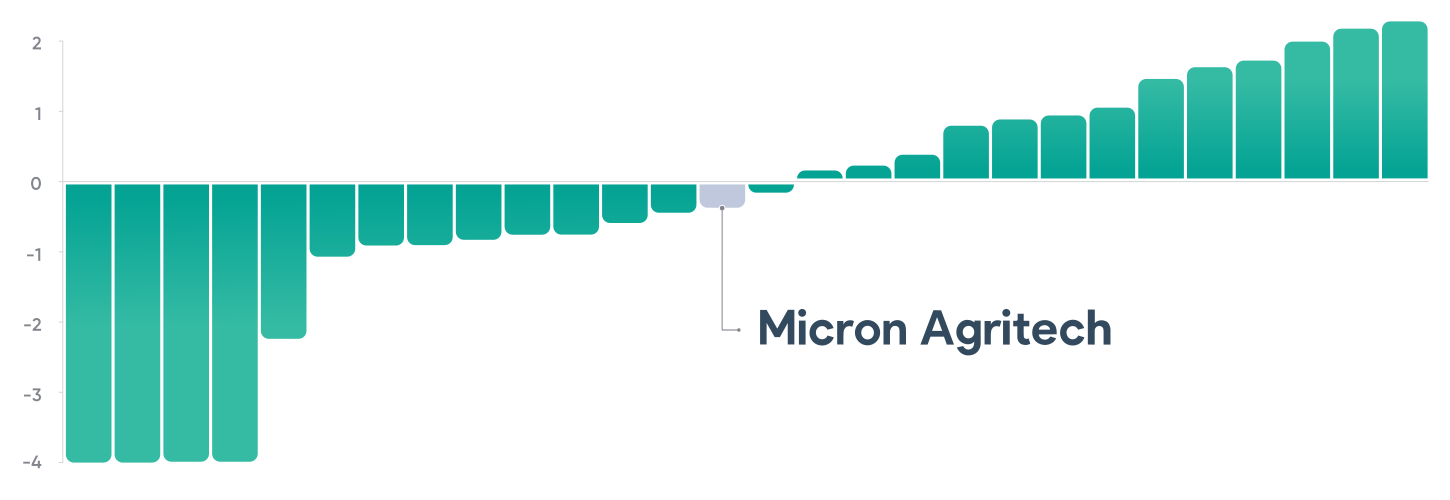


Results from faecal egg count testing are intended to be used as a guide to aid clinicians with their clinical treatment decisions. They should always be interpreted in line with the signalment and history of the presenting patient, clinical signs exhibited and take into account the limitations of the test itself.
REFERENCES
MAFF. 1986. Manual of veterinary parasitological techniques (HMSO: London).
Nielsen, M.K. 2021. ‘What makes a good fecal egg count technique?’, Veterinary Parasitology, 296.
Torgerson, P. R., Paul, M., Lewis, F. I. 2012. ‘The contribution of simple random sampling to observed variations in faecal egg counts’, Vet Parasitol, 188: 397-401.





